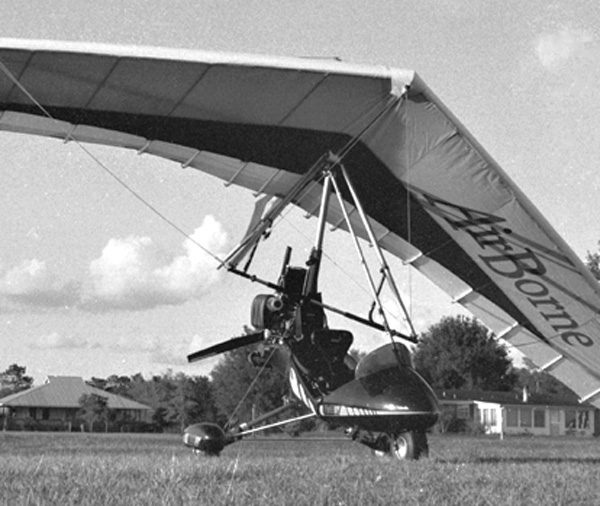
AirBorne Windsports is no johnny-come-lately to the ultralight flying scene. The Australian company has been making hang gliders for the international market for years. AirBorne’s owners – Russ and Rick Duncan – once flew for Moyes Delta Pty., another Australian hang glider company (now known for its Moyes-Bailey Dragonfly aerotug), but later branched out on their own. While both men are thirty-somethings today, they have long experience, starting with competition in hang gliders back when folks still called them “the little Duncan brothers.” They were hot pilots at a young age. Later on, they proved to be solid competitors to the Moyes juggernaut. Then Came Trikes A divergence occurred. After linking up with Florida designer Bobby Bailey to produce the 3-axis Dragonfly aerotug, Moyes’s interest in trikes fell by the wayside. They focused on the already popular Dragonfly for their towing promotion. Meanwhile, the Duncans – now on their own, producing hang gliders – engaged in building trikes.










